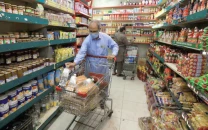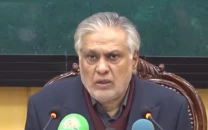Textile producers: ‘Hopeless’ Punjab industry rues energy crisis
Stakeholders feel new policy will not do anything for them

Many exporters believe that this may not be possible with the current situation of energy supply to a much larger province, which covers 70% of this sector. PHOTO: NNI
The stakeholders of the textile sector are left with no choice but to show hopelessness over the conditions. Even big players of the industry believe there is no future due to disparity between provinces.
Even after the announcement of the new textile policy 2014-19, which has targeted to double textile exports to $25 billion from current $13.5 billion, many exporters believe that this may not be possible with the current situation of energy supply to a much larger province, which covers 70% of this sector.
“The plan of doubling textile exports to the EU after the GSP Plus scheme is nothing more than a dream,” said Pakistan Hosiery Manufacturers and Exporters Association Chairman Usman Jawwad. “We just have to ask this simple question: is there enough energy supply to double the exports?”
The GSP Plus window has increased the flow of orders to the hosiery sector, but they cannot utilise their production capacity mainly due to shortage of electricity and gas.
The knitwear sector, which contributes $2.3 billion to the total textile exports, is likely to remain stagnant in future. This is due to the industry facing 12-hour load-shedding and receiving only 25% of the gas quota, which is feared to go down further.
How is it possible to operate a shift with four hours of gas supply in an unpredictable scenario where authorities disconnect gas without prior notice, he asked.
Apart from the energy crisis, the knitwear sector in Punjab is also dealing with the issue of high cost of doing business, which according to them is due to various reasons. Less quantity of gas resulted in a high cost of electricity, which at peak hours goes up to Rs18.5 per unit.
Published in The Express Tribune, February 22nd, 2015.
Like Business on Facebook, follow @TribuneBiz on Twitter to stay informed and join in the conversation.



















COMMENTS
Comments are moderated and generally will be posted if they are on-topic and not abusive.
For more information, please see our Comments FAQ